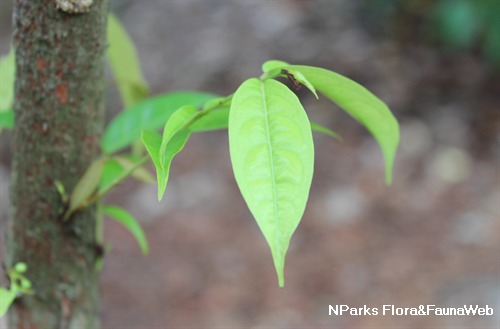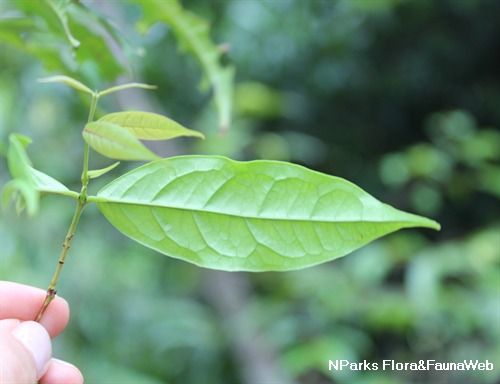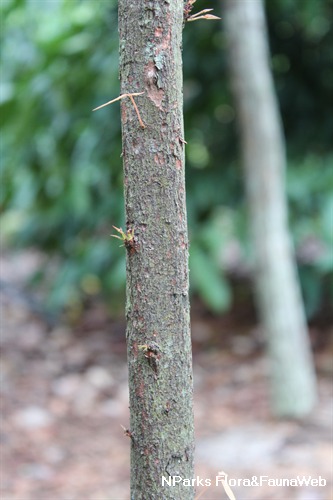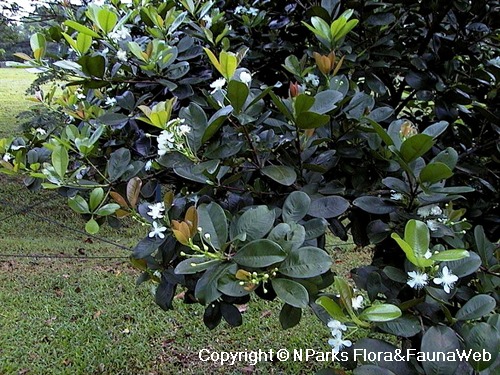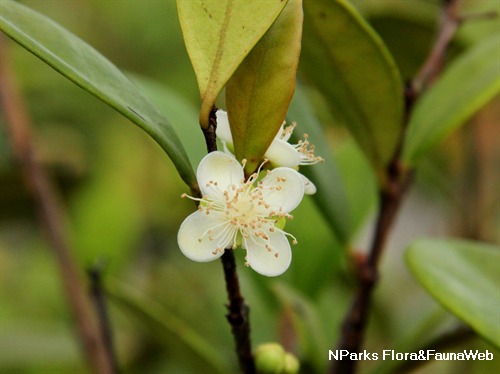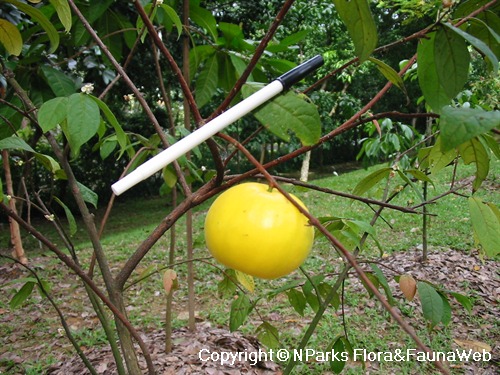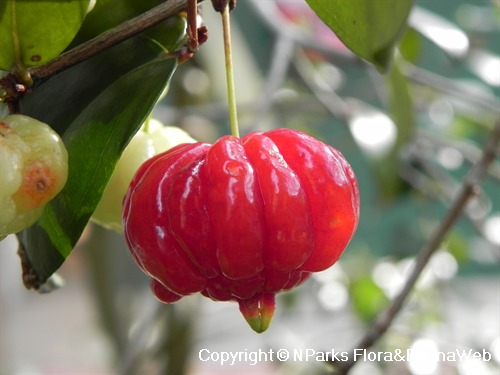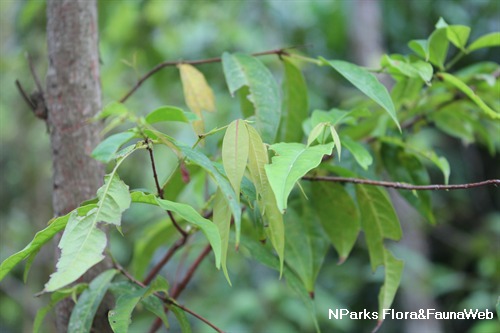
Name
Classifications and Characteristics
| Plant Division | Angiosperms (Flowering Seed Plants) |
|---|---|
| Plant Growth Form | Tree (Shrubby (1m-5m)) |
| Lifespan (in Singapore) | Perennial |
Biogeography
| Native Distribution | South America |
|---|---|
| Native Habitat | Terrestrial |
| Preferred Climate Zone | Tropical |
Description and Ethnobotany
| Growth Form | A shrub or small tree, up to 3 m tall. |
|---|---|
| Foliage | Leaves have an opposite arrangement, elliptical to lanceolate, with sunken veins. |
| Flowers | Flowers are small and white in color. |
| Fruit | Fruits are spheroid to oblate, up to 10 cm in diameter, orange at maturity. Fruit pulp is bright orange and aromatic, with an acidic flavor. There are 2 to 4 seeds per fruit. |
| Cultivation | Plants do well in well-drained, moist soils with high organic matter content. They are adapted to acid soils. |
| Etymology | The genus is named after Prince Eugene of Savoy (1663–1736). |
| Ethnobotanical Uses | Edible Plant Parts : Edible Fruits Food (Fruit or Vegetable): Fruits are used to make juice. |
Landscaping Features
| Desirable Plant Features | Ornamental Fruits |
|---|---|
| Landscape Uses | General, Parks & Gardens, Container Planting |
Plant Care and Propagation
| Light Preference | Full Sun, Semi-Shade |
|---|---|
| Water Preference | Moderate Water |
| Plant Growth Rate | Moderate |
| Rootzone Tolerance | Moist Soils, Well-Drained Soils, Acidic (low pH) Soils |
| Propagation Method | Seed |
Foliar
| Mature Foliage Colour(s) | Green |
|---|---|
| Foliar Type | Simple / Unifoliate |
Floral (Angiosperm)
| Flower Colour(s) | White |
|---|
Fruit, Seed and Spore
| Mature Fruit Colour(s) | Orange |
|---|---|
| Seed Quantity Per Fruit | Few (1-5) |
Image Repository
Others
| Master ID | 32714 |
|---|---|
| Species ID | 7126 |
| Flora Disclaimer | The information in this website has been compiled from reliable sources, such as reference works on medicinal plants. It is not a substitute for medical advice or treatment and NParks does not purport to provide any medical advice. Readers should always consult his/her physician before using or consuming a plant for medicinal purposes. |

